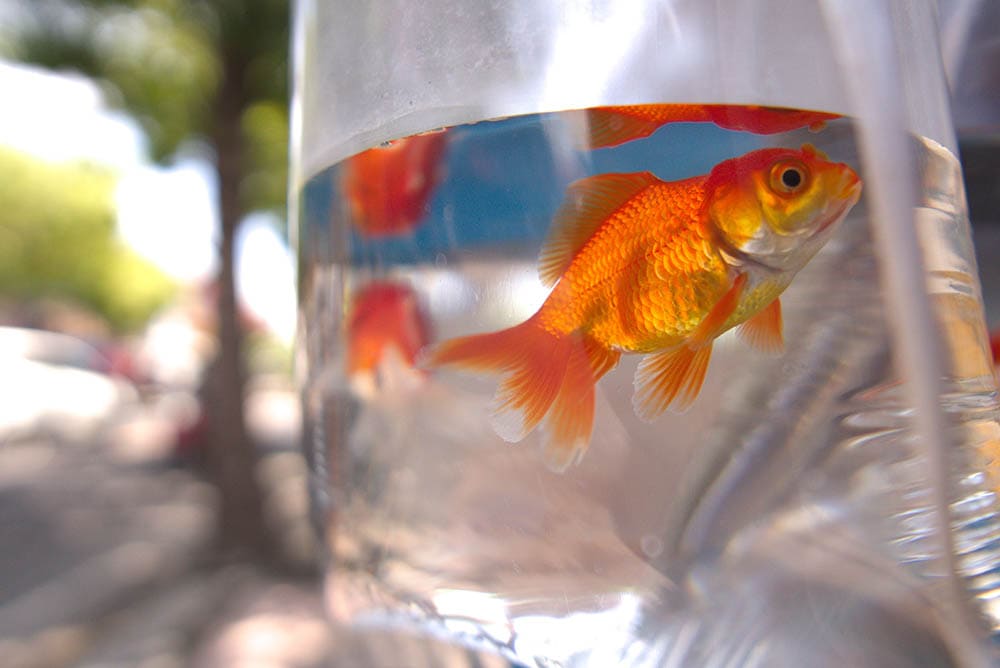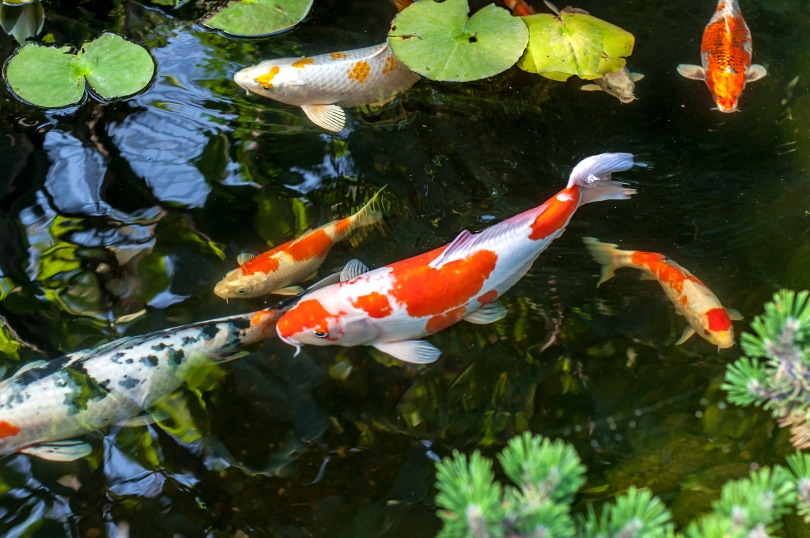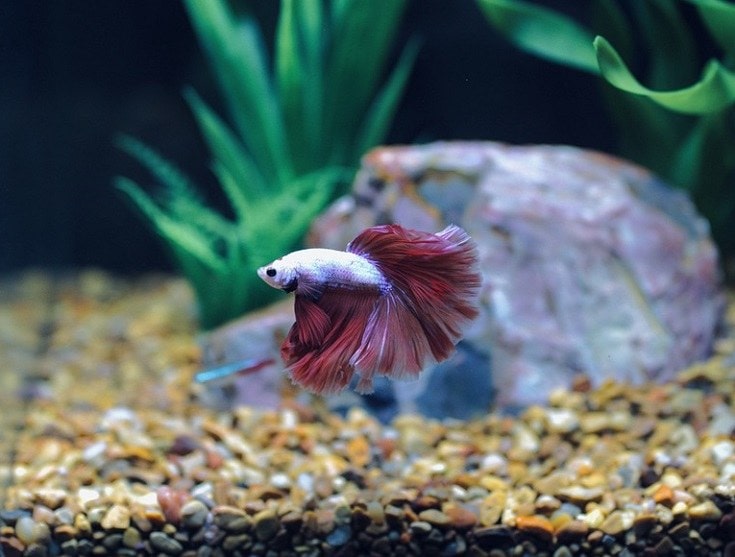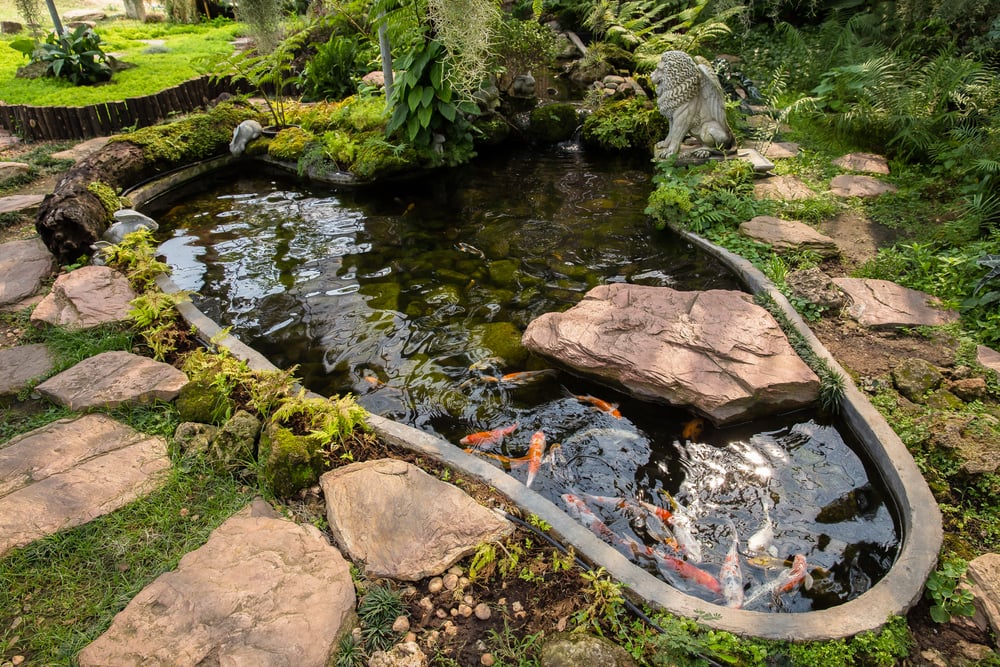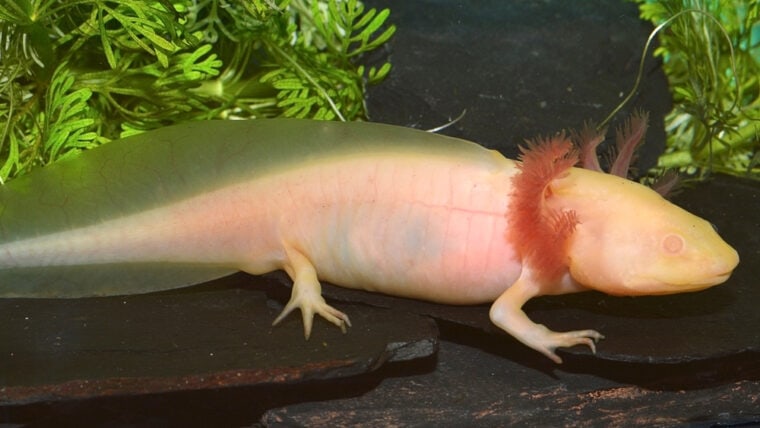
The Albino Axolotl is a slow-developing salamander that many people have taken to calling the Mexican Walking Fish due to its appearance and appendages that make it look like a fish walking on the aquarium floor. If you are considering purchasing one of these amazing animals for your tank but would like to learn more about it first, keep reading while we discuss feeding, habitat, cost, health risks, and more to help you make an informed decision.
Quick Facts About the Albino Axolotl
| Species Name: | A. mexicanum |
| Common Name: | Albino Axolotl |
| Care Level: | Moderate – experienced |
| Lifespan: | 10 – 15 years |
| Adult Size: | 10 – 12 inches |
| Diet: | Worms, midge larvae, grubs, pellets |
| Minimum Tank Size: | 10 – 20 gallons |
| Temperature & Humidity: | 60 – 67 degrees |
Does the Albino Axolotl Make Good Pets?
Yes. The Albino Axolotl makes a great pet, and it is popular with exotic pet collectors. Its unique appearance makes it quite the conversational piece, and all of your friends will be staring into the tank when they come to your home. It’s a calm but active animal that will usually prefer to hide in the dark.
Appearance
It’s easy to mistake the Albino Axolotl for a large reptile, but it’s a type of salamander. It differs from other salamanders in that it reaches sexual maturity without going through the metamorphosis that other species go through that causes them to take to the land. Instead, the Albino Axolotl keeps its gills and stays in the water for life.
Most wild Axolotl is a dark brown with gold sparkles, but the Albino Axolotl lacks color pigment and will be a very light color. It has a wide head and lidless eyes with two thin arms and two legs.

How to Take Care of the Albino Axolotl
Habitat, Tank Conditions & Setup
Tank
The minimum tank size for your Albino Axolotl is ten gallons, but most experts recommend purchasing a 20-gallon tank to give your pet more space to move around freely. It produces a lot of waste, so you will need to change the water frequently to keep it from becoming toxic. Smaller tanks, like the 10-gallon, can be challenging to keep clean.
Your Albino Axolotl likes to hide in the dark shadows, so you will need to place plenty of caves, rocks, logs, and other items to help provide a varied environment. You will also need a strong filter to help keep the water as clean as possible.
Lighting
Your Albino Axolotl does not need any special lighting. Strong lighting can cause your pet to become stressed, and it can even damage your pet’s eyes.
Heating (Temperature & Humidity)
Our Albino Axolotl prefers cooler water temperatures of the low to mid-60s, and it rarely sees temperatures above 68 degrees in nature. This cooler can pose a challenge for many homes in the United States that usually have their room temperature at 70 degrees which will arm the water too much and stress your pet. Floating bottles of ice water can help, but you will need to always keep a close eye on the temperature.
Substrate
Most experts recommend ordinary sand for the substrate in your Albino Axolotl aquarium. Since these salamanders like to eat the substrate, ordinary tank gravel and other substrates can cause intestinal discomfort and even blockages. If you cannot use sand, you will need to use something larger than your pet’s head, so it can’t eat it.
| Tank Recommendations | |
| Tank Type: | 40-gallon glass vivarium |
| Lighting: | Standard/Low |
| Cooling: | Floating ice bottles |
| Best Substrate: | Sand |

Feeding Your Albino Axolotl
Your Albino Axolotl will generally eat pellets or earthworms (live or frozen) that you can purchase online, at the local pet store, and even at a bait and tackle shop. The Axolotl does not see well, so you will need to place the food to find it easily. Feeding at the same time each day can help get your pet on a schedule, so it knows when to look for the food you are providing. Be careful with live food because it can contaminate the water requiring more frequent changes.
| Diet Summary | |
| Fruits: | 0% of the diet |
| Insects: | 100% of the diet |
| Meat: | 0% of diet – small/medium sized rodents |
| Supplements Required: | None |
Keeping Your Albino Axolotl Healthy
Keeping your Axolotl is not difficult as long as you can keep the water clean and cool. Smaller tanks will get dirty quickly, and their temperature can fluctuate much faster. However, larger tanks can be difficult to work with because they contain so much water.

Lifespan
You can expect your Albino Axolotl to live for about 10 – 15 years as long as you keep the water at the right temperature. It stays healthy, and the only problems you will need to worry about occur when the water gets too warm, there’s too much light, or it’s eaten too much substrate. Problems can also occur from feeding live food because the food will increase the tank’s waste material and might add bacteria and parasites.
Breeding
If you have a male and female adult Albino Axolotl in your tank, they can breed. Most mating will occur in December and January, but it can occur at any time of the year. Most experts recommend waiting until the female is at least 18 months old and fully grown because producing new eggs puts a heavy strain on the body that can cause her to fall ill.
Are the Albino Axolotl Friendly? Our Handling Advice
Unfortunately, your Albino Axolotl is not a pet you will be handling. It spends all of its time in the water and has poor vision, so it will scare easily if there is too much commotion in the room. It will spend most of its time hiding in the shadows of the tank until it’s time to feed.

Shedding & Brumation: What to Expect
You will not need to worry about shedding or brumation with an Albino Axolotl. It does not shed, nor will it hibernate in cooler water temperatures.
How Much Does an Albino Axolotl Cost?
You can expect to pay between $25 and $50 for your Albino Axolotl, depending on your location and the breeder you choose. The Eastern part of the United States usually has lower prices than the West, and large commercial breeders will have lower prices than a small breeder and may also provide a health guarantee. As breeders learn more about captive breeding, and these pets become more popular, prices are likely to come down significantly.
Care Guide Summary
Final Thoughts
The Albino Axolotl is an exotic-looking pet that makes a great addition to any aquarium. It’s better suited to experienced owners since it can be difficult to maintain the habitat. However, if you are vigilant about watching the temperature and changing the water, there is no reason it won’t make a great first-time pet.
We hope you have enjoyed our look into these interesting pets and found the answers you needed. If we have convinced you to give one a try in your home, please share this guide to the Albino Axolotl on Facebook and Twitter.
Featured Image Credit: Guillermo Guerao Serra, Shutterstock

